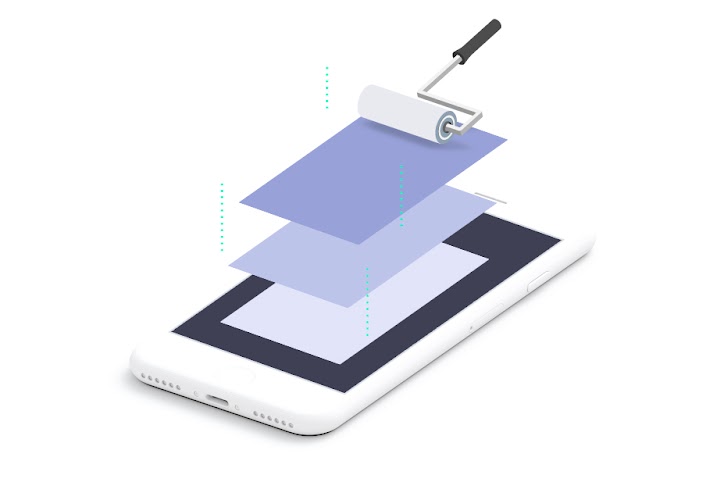



WHY YOUR WEBSITE DESIGN IS IMPORTANT AND TIPS ON HOW TO IMPROVE IT.
Public Relations (PR) can be a powerful tool to help elevate your e-commerce business, build a loyal customer base, and stand out from the crowd.

If you're serious about growing your Shopify store, your website design isn't just about aesthetics, it's a business tool that influences trust, conversions, and your brand’s credibility.
Good design does more than "look nice." It makes your store easy to use, clearly communicates your brand, and ultimately leads more visitors toward making a purchase.
Let’s explore why website design matters and how to level up your Shopify storefront.
Why Web Design Is Critical to Shopify Store Success 1) First Impressions Count Visitors judge your brand within seconds. A clean, modern, and well-structured site builds immediate trust. A cluttered, outdated design? That sends customers running to a competitor.
2) Boosts Engagement & Reduces Bounce Rates Great design keeps users on your site longer by making it easier to navigate, scan, and interact. If users can’t find what they’re looking for quickly, they’ll leave, often for good.
3) Builds Brand Recognition & Trust Your design is part of your brand identity. Everything from your fonts and colors to layout and tone of voice should reflect your brand’s personality and values. A cohesive design creates familiarity and builds long-term trust.
4) Supports Seamless User Experience (UX) Design and UX go hand-in-hand. A well-designed website should guide users effortlessly from browsing to checkout. Poor UX like confusing menus or slow loading times can kill your conversion rate.
5) Gives You a Competitive Advantage In today’s saturated e-commerce market, a well-designed Shopify store is a competitive weapon. When your site looks better, feels smoother, and works faster than the competition’s, customers are more likely to buy from you.
How to Improve Your Shopify Website Design
Design is part art, part strategy. Here’s how to improve the design of your Shopify store without overcomplicating things:
1) Keep It Simple and Clean Less is more. Focus on a minimal, distraction-free layout that emphasizes your products. Use whitespace to give your content room to breathe and avoid cluttering your pages.
2) Create a Consistent Design System From buttons and typography to colors and iconography, consistency is key. Create a design system that ensures every page looks and feels like part of the same store.
3) Prioritise Navigation Make it easy for users to find products with a simple menu structure, smart categorisation, filters, and a clear search bar. Don’t bury important pages like “Shipping Info” or “Returns.”
4) Use Color and Contrast Intentionally Color isn’t just decorative, it directs attention. Use brand colors for consistency, but apply contrast to highlight CTAs and key content. Avoid overusing too many bright or clashing tones.
5) Choose Images That Sell Use high-quality, professionally shot images that show your products in use. Lifestyle images help customers visualize themselves using your product, increasing emotional connection.
6) Use Legible, On-Brand Fonts Pick fonts that are easy to read and reflect your brand’s personality. Limit yourself to 1–2 font families and use font weights and sizes to establish a clear visual hierarchy.
7) Design for Mobile First Over half of e-commerce sales happen on mobile. Your site should look and function flawlessly on any device. Test on mobile regularly and optimise button sizes, spacing, and load speeds.
8) Build a Visual Hierarchy Guide users to the most important information using:
Larger headings
Clear CTA buttons
Bold colors for emphasis
Logical content structure
9) Ensure Fast Load Times Slow sites kill conversions. Compress your images, use optimised Shopify themes, and remove unnecessary apps or custom scripts that slow things down.
10) Test, Measure, and Iterate Design is never done. Use tools like Hotjar, Google Analytics, or Shopify’s built-in analytics to gather feedback and spot bottlenecks. A/B test layouts, images, or CTAs to improve performance over time.
Pro Tips As a Shopify agency, here are a few extra tips from our Shopify designers:
1) Set Clear Design Goals: Are you optimising for conversions? Trust? A new product launch? Your design should support those goals, not just look pretty.
2) Map the Customer Journey: Design every step, from homepage to checkout, to match how your ideal customer thinks and shops.
3) Don’t Copy—Adapt: It’s fine to take inspiration from brands you admire, but your design should still feel uniquely you.
4) Lean on Conversion Principles: Every design decision should support action, highlighting benefits, reducing friction, and guiding users toward buying.
Final Thoughts: Design That Converts
Your website is often the first and only chance you get to make a lasting impression. In e-commerce, design isn’t just visual, it’s strategic. A great-looking, easy-to-use, high-converting store builds customer trust, supports your brand, and grows your revenue.
Need Help With Your Shopify Design? At Why Matters, we specialise in building stunning Shopify stores that don’t just look good but sell better. From custom themes to conversion-focused redesigns, we help brands turn browsers into buyers.
👉 Book a Free Store Design Audit Let’s create a store your customers love and your competitors envy.

